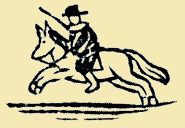- Yes!
- Group Sculptures
- Mirrors
- Sculpture Gallery
- Presents
- Have You Seen My Kitty?
- Magic Hat
- Hotseat, or, The Press Conference
- “I’ll follow you!”: A choral speech
- Three Worlds
- Two-character exchanges
- “Now I am alone”: The soliloquy
- Group voice: Sharing a character
- Showdown: Oberon vs. Titania
- Planning the Project: What do you want your students to achieve?
- Planning the Project: Making room for Shakespeare
- Planning the Project: The Final Performance
- A sample sequence
- Laying the foundation, establishing some rituals
- Preparing for the journey: A checklist
- We shall not cease from exploration

Part of the working method at Winedale, as developed over the years by Dr. Ayres, was to build group energy and awareness through exercises, games, and songs. You can tell a lot about a group by how it does one of these warm-ups, or how it sings together. These activities can be used at the beginning of a project or unit, or they can be mixed in once an introductory session has been given on the text – whatever is best for a particular group. They are helpful to use along the way to refocus energy, work on basic stage and projection skills, or refresh a sense of ensemble. One approach is to use these for 10-15 minutes at the beginning of a 45-minute Shakespeare session, and perhaps for another 5 minutes at the end. Often, these games and shared moments become some of the moments kids recall most fondly about the experience. Each activity has a slightly different focus. Improvisations help develop self-confidence on stage by challenging the kids to let go of stage fright and “play” freely with one another in a generous, supportive way. They also pave the way for the energy and role-playing needed in scene work. Warm-ups, games, and songs help train bodies and voices to move quickly and fluently when necessary, and build a sense of team spirit and unity. One of the goals of play activities is to teach kids to be free again with one another. When they are little, children can usually play freely with one another, spontaneously inventing situations and spinning out stories without self-consciousness. But as we get older, we begin to be more aware of what others think. We begin to learn to wear masks for different occasions, to present one “self” at home, one at school, one at dance class, one at baseball practice. This is especially the case with shy children, who can be completely different at home. So the emphasis in our “play work” is to aim at spontaneous, natural performances grounded in generosity of spirit. Students must listen to one another, respond to one another, create an imaginary world together. All of it can feel very new and require some skill-building. We believe that kids who treat each other as equals, listen to one another, and seek to create something special as a group will also establish a classroom environment that supports learning and good citizenship. We know that this is already one of your classroom goals, but perhaps Shakespeare can help. He’s not a miracle worker, but it does seem that working on his plays can help kids find new ways to get along with one another.
